Search Results for 'height'
-
AuthorSearch Results
-
January 4, 2026 at 10:01 pm #8043
In reply to: Finder’s Keepers of the Hoard
A cinematic, low-angle shot inside a flooded, ancient brick sewer tunnel that looks like a mix of Roman catacombs and Victorian industrial plumbing. The water is dark and murky, reflecting the light of a flickering lantern.
In the center of the frame, floating precariously, is a bright yellow, cheap inflatable dinghy.
Inside the dinghy are two men:
-
Spirius: An elderly man with a nervous expression, wearing a high-vis vest over ancient saintly robes. He is clutching an antique musket that is clearly too heavy for him. A faint, golden neon halo flickers erratically behind his head like a faulty streetlamp.
-
Boothroyd: A grumpy, weather-beaten gardener in a tweed cap. He looks completely resigned to his fate, lazily paddling with a plastic oar in one hand and holding a sharp garden spear in the other.
Action: The dinghy squeaks as it bumps against the wet brick walls. Spirius jumps at a drip of water falling from the ceiling. Something large ripples the water in the foreground—a menacing shadow moving beneath the surface.
Atmosphere:
-
Lighting: Chiaroscuro—deep shadows and warm lantern light, contrasting with the synthetic yellow of the boat.
-
Mood: Tense but ridiculous. High-stakes fantasy meets low-budget reality.
Movement:
-
The camera tracks slowly backward as the boat drifts forward.
-
The water ripples ominously.
-
Spirius’s halo buzzes and dims when he gets scared.
January 4, 2026 at 9:59 pm #8042In reply to: Finder’s Keepers of the Hoard
A continuous, fast-moving FPV drone shot.
The Start: The camera zips through a sterile, white modern reception area with a sign reading ‘Sanctus Training Ltd.’ It flies over a bored receptionist’s desk and straight through a pair of unassuming double doors.
The Reveal: The moment the doors pass, the world expands impossible. We are now inside a massive, cathedral-like Grand Townhouse built of glowing golden Cotswold stone.
The Hoard: The drone dives into a ‘canyon’ of hoarded objects. It weaves perilously between towering stacks of yellowed newspapers, piles of 17th-century furniture, and a mountain of washing machines.
The Architecture: As the drone speeds up, we pass tall, elegant Georgian windows on the left (showing a blur of an overgrown orchard and stables outside). On the right, the architecture shifts to heavy, rough stone arches—the Medieval Norman wing.
The Details: The camera narrowly misses a hanging chandelier made of plastic coat hangers and crystal, zooms over a grand dining table buried in Roman pottery and taxidermy, and finally flies up towards the vaulted ceiling of a Norman Chapel, where a beam of purple stained-glass light catches dust motes dancing in the air.”
January 4, 2026 at 6:59 pm #8029In reply to: The Hoards of Sanctorum AD26
“While you’re off to another wild dragon chase, I’m calling the plumber,” Yvoise announced. She’d found one who accepted payment in Roman denarii. She began tapping furiously on her smartphone to recover the phone number, incensed at having been blocked again from Faceterest for sharing potentially unchecked facts (ignorants! she wanted to shout at the screen).
 After a bit of struggle, the appointment was set. She adjusted her blazer; she had a ‘Health and Safety in the Workplace’ seminar to lead at Sanctus Training in twenty minutes, and she couldn’t smell like wet dog.
After a bit of struggle, the appointment was set. She adjusted her blazer; she had a ‘Health and Safety in the Workplace’ seminar to lead at Sanctus Training in twenty minutes, and she couldn’t smell like wet dog.“Make sure you bill it to the company account…!” Helier shouted over the noise Spirius was making huffing and struggling to load the antique musket.
“…under ‘Facility Maintenance’!”
“Obviously,” Yvoise scoffed. “We are a legitimate enterprise. Sanctus House has a reputation to uphold. Even if the landlord at Olympus Park keeps asking why our water consumption rivals a small water park.”
Spirius shuddered at the name. “Olympus Park. Pagan nonsense. I told you we should have bought the unit in St. Peter’s Industrial Estate.”
“The zoning laws were restrictive, Spirius,” Yvoise sighed. “Besides, ‘Sanctus Training Ltd’ looks excellent on a letterhead. Now, if you’ll excuse me, I have six junior executives coming in for a workshop on ‘Conflict Resolution.’ I plan to read them the entirety of the Treaty of Arras until they submit.”
“And dear old Boothroyd and I have a sewer dragon to exterminate in the name of all that’s Holy. Care to join, Helier?”
“Not really, had my share of those back in the day. I’ll help Yvoise with the plumbing. That’s more pressing. And might I remind you the dragon messing with the plumbing is only the first of the three tasks that Austreberthe placed in her will to be accomplished in the month following her demise…”
“Not now, Helier, I really need to get going!” Yvoise was feeling overwhelmed. “And where’s Cerenise? She could help with the second task. Finding the living descendants of the last named Austreberthe, was it? It’s all behind-desk type of stuff and doesn’t require her to get rid of anything…” she knew well Cerenise and her buttons.
“Yet.” Helier cut. “The third task may well be the toughest.”
“Don’t say it!” They all recoiled in horror.
“The No-ve-na of Cleans-ing” he said in a lugubrious voice.
“Damn it, Helier. You’re such a mood killer. Maybe better to look for a loophole for that one. We can’t just throw stuff away to make place for hers, as nice her tastes for floor tiling were.” Yvoise was in a rush to get to her appointment and couldn’t be bothered to enter a debate. She rushed to the front door.
“See you later… Helier-gator” snickered Laddie under her breath, as she was pretending to clean the unkempt cupboards.
January 3, 2026 at 8:09 pm #8025In reply to: The Hoards of Sanctorum AD26
As soon as Boothroyd had gone, Laddie Bentry, the under gardener, emerged from behind the Dicksonia squarrosa that was planted in a rare French Majolica Onnaing dragon eagle pot. The pot, and in particular the tree fern residing within it, were Laddie’s favourite specimen, reminding him of his homeland far away.
Keeping a cautious eye on the the door leading into the house, Laddie hurried over to the cast iron planter and retrieved the Liz Tattler novel hidden underneath. Quickly he tucked in into the inside pocket of his shabby tweed jacket and hastened to the door leading to the garden. Holding on to his cap, for the wind was cold and gusty, he ran to the old stable and darted inside. Laddie reckoned he had an hour or two free without Boothroyd hovering over him, and he settled himself on a heap of old sacks.
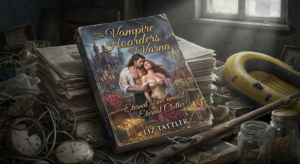 The Vampire Hoarders of Varna. It wasn’t the first time Laddie had seen Boothroyd surreptitiously reading Helier’s books, and it had piqued his curiosity. What was it the old fart found so interesting about Helier’s novels? The library was full of books, if he wanted to read. Not bothering to read the preface, and not having time to start on page one, Laddie Bentry flicked through the book, pausing to read random passages.
The Vampire Hoarders of Varna. It wasn’t the first time Laddie had seen Boothroyd surreptitiously reading Helier’s books, and it had piqued his curiosity. What was it the old fart found so interesting about Helier’s novels? The library was full of books, if he wanted to read. Not bothering to read the preface, and not having time to start on page one, Laddie Bentry flicked through the book, pausing to read random passages.….the carriage rattled and lurched headlong through the valley, jostling the three occupants unmercifully. “I’ll have the guts of that coachman for garters! The devil take him!” Galfrey exclaimed, after bouncing his head off the door frame of the compartment.
“Is it bleeding?” asked Triviella, inadvertently licking her lips and she inspected his forehead.
“The devil take you too, for your impertinence,” Galfrey scowled and shook her off, his irritation enhanced by his alarm at the situation they found themselves in.
Ignoring his uncharacteristic bad humour, Triviella snuggled close and and stroked his manly thigh, clad in crimson silk breeches. “Just think about the banquet later,” she purred.
Jacobino, austere and taciturn, on the opposite seat, who had thus far been studiously ignoring both of them, heard the mention of the banquet and smiled for the first time since…
Laddie opened the book to another passage.
“……1631, just before the siege of Gloucester, and what a feast it was! It was hard to imagine a time when we’d feasted so well. Such rich and easy pickings and such a delightful cocktail. One can never really predict a perfect cocktail of blood types at a party, and centuries pass between particularly memorable ones. Another is long overdue, and one would hate to miss it,” Jacobino explained to the innocent and trusting young dairy maid, who was in awe that the handsome young gentleman was talking to her at all, yet understood very little of his dialogue.
“Which is why,” Jacobino implored, taking hold of her small calloused hands, “You must come with me to the banquet tonight.”
Little did she know that her soft rosy throat was on the menu…..
December 31, 2025 at 7:34 pm #8018In reply to: The Hoards of Sanctorum AD26
It must be two hundred years at least since we’ve heard a will read at number 26, Cerenise thought to herself, still in a mild state of shock at the unexpected turn of events. She allowed her mind to wander, as she was wont to do.
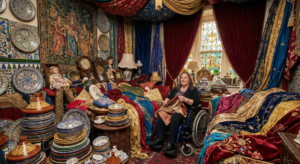 Cerenise had spent the best part of a week choosing a suitable outfit to wear for the occasion and the dressing room adjoining her bedroom had become even more difficult to navigate. Making sure her bedroom door was securely locked before hopping out of her wicker bath chair (she didn’t want the others to see how nimble she still was), she spent hours inching her way through the small gaps between wardrobes and storage boxes and old wooden coffers, pulling out garment after garment and taking them to the Napoleon III cheval mirror to try on. She touched the rosewood lovingly each time and sighed. It was a beautiful mirror that had faithfully reflected her image for over 150 years.
Cerenise had spent the best part of a week choosing a suitable outfit to wear for the occasion and the dressing room adjoining her bedroom had become even more difficult to navigate. Making sure her bedroom door was securely locked before hopping out of her wicker bath chair (she didn’t want the others to see how nimble she still was), she spent hours inching her way through the small gaps between wardrobes and storage boxes and old wooden coffers, pulling out garment after garment and taking them to the Napoleon III cheval mirror to try on. She touched the rosewood lovingly each time and sighed. It was a beautiful mirror that had faithfully reflected her image for over 150 years.Holding a voluminous black taffetta mourning dress under her chin, Cerenise scrutinised her appearance. She looked well in black, she always felt, and it was such a good background for exotic shawls and scarves. Pulling the waist of the dress closer, it became apparent that a whalebone corset would be required if she was to wear the dress, a dreadful blight on the fun of wearing Victorian dresses. She lowered the dress and peered at her face. Not bad for, what was it now? One thousand 6 hundred and 43 years old? At around 45 years old, Cerenise decided that her face was perfect, not too young and not too old and old enough to command a modicum of respect. Thenceforth she stopped visibly aging, although she had allowed her fair hair to go silver white.
It was just after the siege of Gloucester in 1643, which often seemed like just yesterday, when Cerenise stopped walking in public. Unlike anyone else, she had relished the opportunity to stay in one place, and not be sent on errands miles away having to walk all the way in all weathers. Decades, or was it centuries, it was hard to keep track, of being a saint of travellers had worn thin by then, and she didn’t care if she never travelled again. She had done her share, although she still bestowed blessings when asked.
It was when she gave up walking in public that the hoarding started. Despite the dwellings having far fewer things in general in those days, there had always been pebbles and feathers, people’s teeth when they fell out, which they often did, and dried herbs and so forth. As the centuries rolled on, there were more and more things to hoard, reaching an awe inspiring crescendo in the last 30 years.
Cerenise, however, had wisely chosen to stop aging her teeth at the age of 21.
Physically, she was in surprisingly good shape for an apparent invalid but she spent hours every day behind locked doors, clambering and climbing among her many treasures, stored in many rooms of the labyrinthine old building. There was always just enough room for the bath chair to enter the door in each of her many rooms, and a good strong lock on the door. As soon as the door was locked, Cerenise parked the bath chair in front of the door and spent the day lifting boxes and climbing over bags and cupboards, a part of herself time travelling to wherever the treasures took her.
Eventually Cerenise settled on a long and shapeless but thickly woven, and thus warm, Neolithic style garment of unknown provenance but likely to be an Arts and Crafts replica. It was going to be cold in the library, and she could dress it up with a colourful shawl.
July 16, 2025 at 6:06 am #7969In reply to: The Elusive Samuel Housley and Other Family Stories
Gatacre Hall and The Old Book
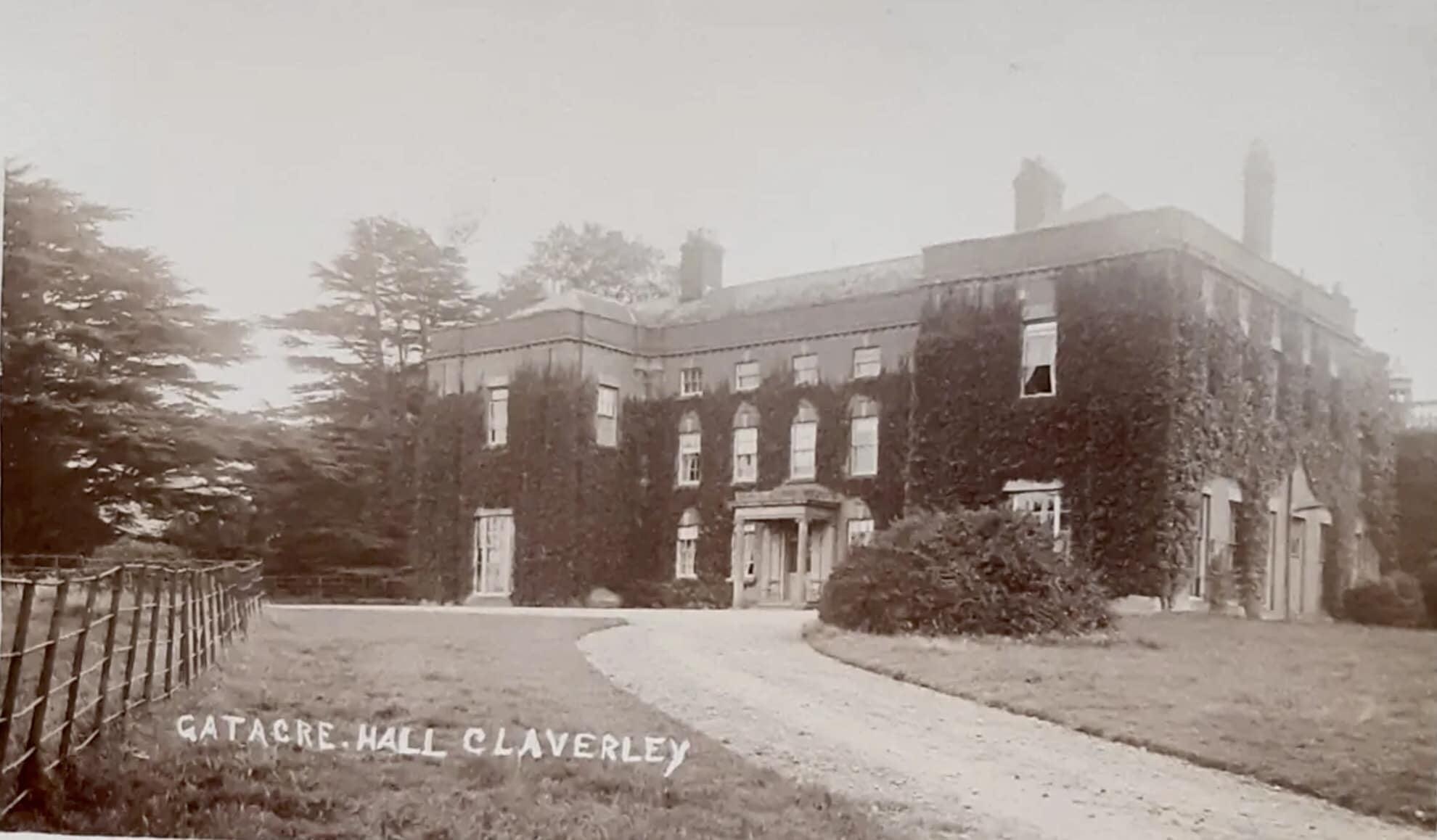
In the early 1950s my uncle John and his friend, possibly John Clare, ventured into an abandoned old house while out walking in Shropshire. He (or his friend) saved an old book from the vandalised dereliction and took it home. Somehow my mother ended up with the book.

I remember that we had the book when we were living in USA, and that my mother said that John didn’t want the book in his house. He had said the abandoned hall had been spooky. The book was heavy and thick with a hard cover. I recall it was a “magazine” which seemed odd to me at the time; a compendium of information. I seem to recall the date 1553, but also recall that it was during the reign of Henry VIII. No doubt one of those recollections is wrong, probably the date. It was written in English, and had illustrations, presumably woodcuts.
I found out a few years ago that my mother had sold the book some years before. Had I known she was going to sell it, I’d have first asked her not to, and then at least made a note of the name of it, and taken photographs of it. It seems that she sold the book in Connecticut, USA, probably in the 1980’s.
My cousin and I were talking about the book and the story. We decided to try and find out which abandoned house it was although we didn’t have much to go on: it was in Shropshire, it was in a state of abandoned dereliction in the early 50s, and it contained antiquarian books.
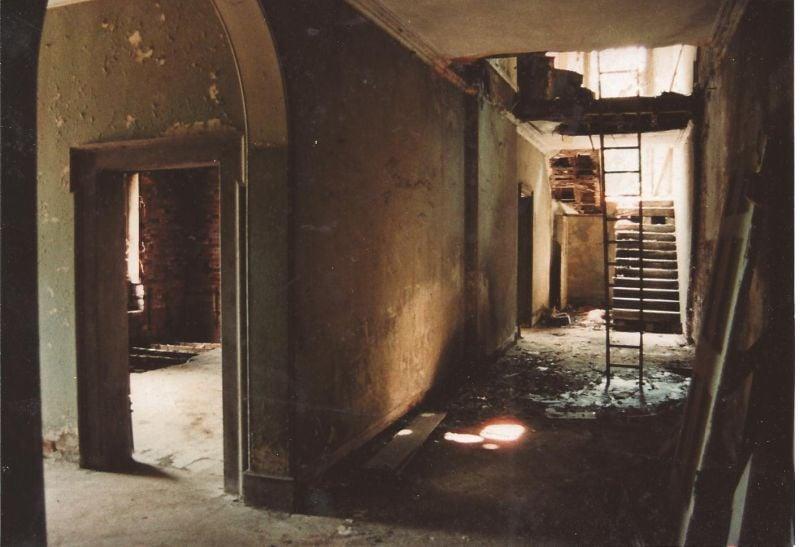
I posted the story on a Shropshire History and Nostalgia facebook group, and almost immediately had a reply from someone whose husband remembered such a place with ancient books and manuscripts all over the floor, and the place was called Gatacre Hall in Claverley, near Bridgnorth. She also said that there was a story that the family had fled to Canada just after WWII, even leaving the dishes on the table.
The Gatacre family sailing to Canada in 1947:
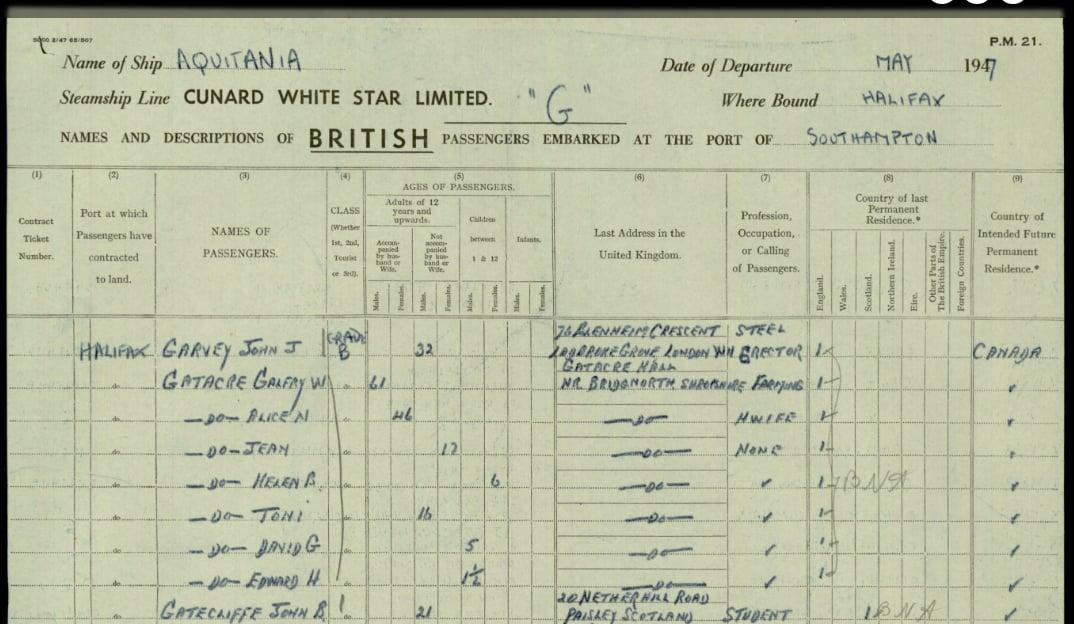
When my cousin heard the name Gatacre Hall she remembered that was the name of the place where her father had found the book.
I looked into Gatacre Hall online, in the newspaper archives, the usual genealogy sites and google books searches and so on. The estate had been going downhill with debts for some years. The old squire died in 1911, and his eldest son died in 1916 at the Somme. Another son, Galfrey Gatacre, was already farming in BC, Canada. He was unable to sell Gatacre Hall because of an entail, so he closed the house up. Between 1945-1947 some important pieces of furniture were auctioned, and the rest appears to have been left in the empty house.
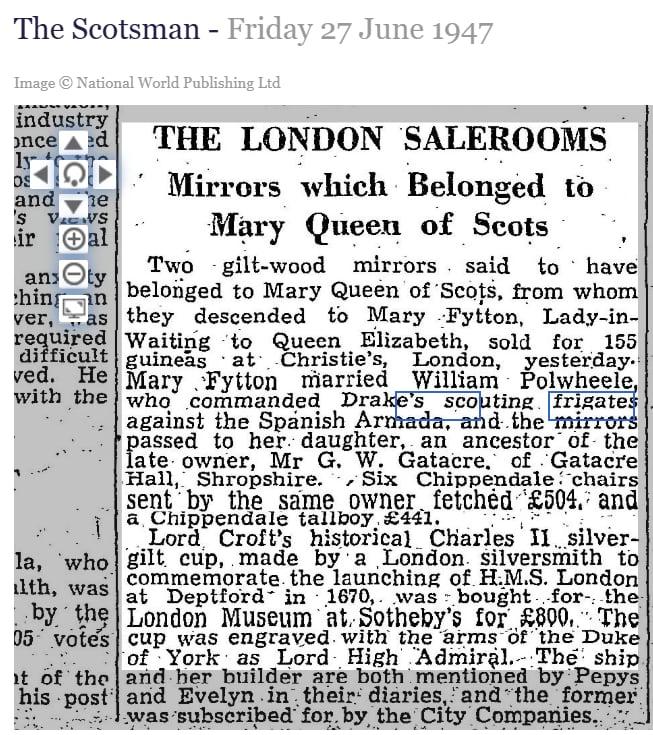
The family didn’t suddenly flee to Canada leaving the dishes on the table, although it was true that the family were living in Canada.
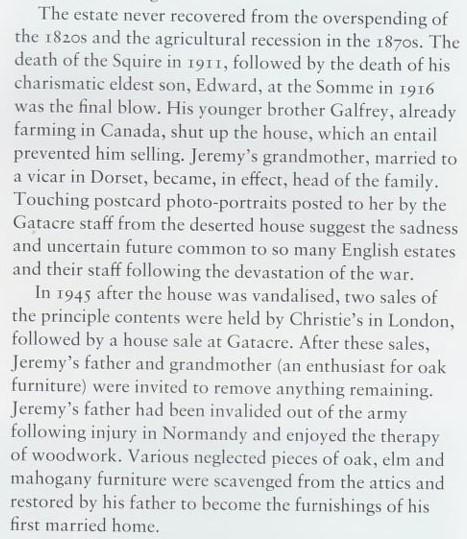
An interesting thing to note here is that not long after this book was found, my parents moved to BC Canada (where I was born), and a year later my uncle moved to Toronto (where he met his wife).
Captain Gatacre in 1918:

The Gatacre library was mentioned in the auction notes of a particular antiquarian book:
“Provenance: Contemporary ownership inscription and textual annotations of Thomas Gatacre (1533-1593). A younger son of William Gatacre of Gatacre Hall in Shropshire, he studied at the English college at the University of Leuven, where he rejected his Catholic roots and embraced evangelical Protestantism. He studied for eleven years at Oxford, and four years at Magdalene, Cambridge. In 1568 he was ordained deacon and priest by Bishop of London Edmund Grindal, and became domestic chaplain to Robert Dudley, 1st Earl of Leicester and was later collated to the rectory of St Edmund’s, Lombard Street. His scholarly annotations here reference other classical authors including Plato and Plutarch. His extensive library was mentioned in his will.”


There are thirty four pages in this 1662 book about Thomas Gatacre d 1654:
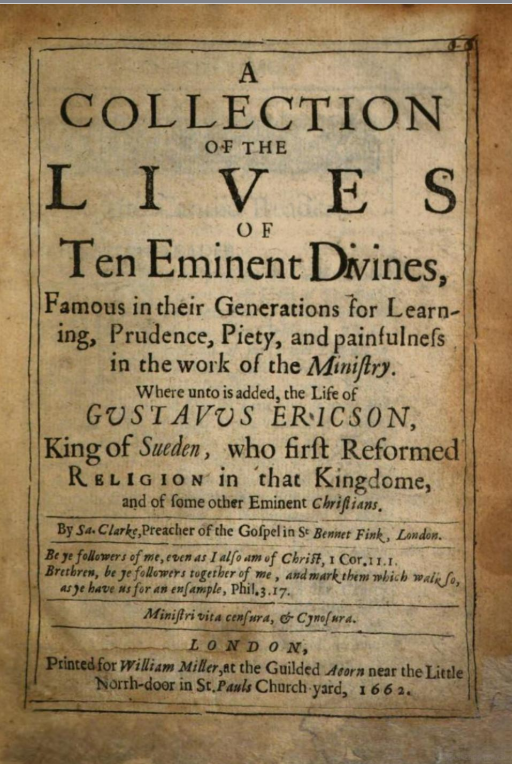
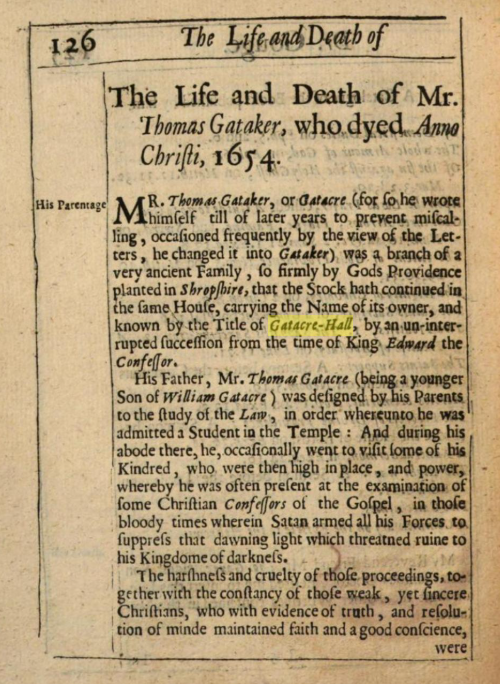 May 17, 2025 at 11:47 pm #7946
May 17, 2025 at 11:47 pm #7946In reply to: Liz Tattler – A Lifetime of Stories, in videos
Enter Liz’s Tipsy Waltz
[Verse]
Feathered quill meets parchment skin
Elizabeth writes where scandals begin
Pink champagne spills on the floor
Cougar’s grin says she’s ready for more[Verse 2]
Famed author weaves sly tales with fire
Slutty thoughts fuel Roberto’s desire
Finnley
The ghost
Hides in the night
Typewriter clicks
Dim candlelight[Chorus]
Ink and lust flow through this tale
Secrets whispered on parchment pale
Godfrey nuts
Edits the scene
In this wild world
What’s it all mean?[Verse 3]
In the cabinet where whispers creak
Roberto shows a sly technique
Finnley sighs
Unseen but clear
Through the shadows
His words appear[Bridge]
Elizabeth leads with a champagne toast
A cougar’s smirk
The fading ghost
Peanuts scatter
Chaos remains
A writer’s world drips ink and stains[Verse 4]
Pages flutter
They dance
They shout
Godfrey snickers
Edits play out
Roberto winks with knowing grace
In this madhouse
Who sets the pace?May 17, 2025 at 11:41 pm #7945Welcome to the Flying Fish Inn
[Verse]
Dusty inn of stories wide
Gum-leaf whispers where dreams abide
Mater’s laugh like the crackling fire
Dodo’s show lifts the spirits higher[Chorus]
Out on the edge where memories spin
Bushland beats and legends begin
With clove and Corrie’s mischievous grin
Here lies the heart of a dusty inn[Verse 2]
Prune plays tricks by lantern’s gleam
Kookaburras join this timeless theme
Aunt Idle’s wink it holds a spark
Lighting tales in the outback dark[Bridge]
Rusted signs swing slow with pride
Creaking porch where secrets hide
Every soul has a verse within
And every night’s a new tale to spin[Chorus]
Out on the edge where memories spin
Bushland beats and legends begin
With clove and Corrie’s mischievous grin
Here lies the heart of a dusty inn[Verse 3]
Old Bert hums with a pipe in hand
Echoes surf on the scorched red land
Shadows dance on the pub’s embrace
Laugh lines drawn on every faceMay 17, 2025 at 10:58 pm #7940In reply to: Cofficionados – What’s Brewing
 The Cofficionados Theme Song “Dont Trust a Goat with a Plan”
The Cofficionados Theme Song “Dont Trust a Goat with a Plan”[Verse]
Goat in a bow tie whispers
“Trust me
My dear”
A plan in its hooves but intentions unclear
Guard the coffee belt like a treasure map’s end
Four bandits are plotting to twist and upend[Chorus]
Don’t trust a goat with a plan
My friend
They’ll sip your dreams while you defend
Lucid nights sabotaged mid-spin
By cofficionados sneaking in[Verse 2]
Carob in shadows
No cocoa in sight
Thiram with whispers that steal your midnight
Amy’s sweet smile hides beans of deceit
Chico grinds chaos
The bitter elite[Bridge]
Sleep-parachute breaches
Reverse dreams collide
They’ve hijacked your pillow for the wildest ride
Beware the saboteurs that seep in deep
Between dripping espresso and REM sleep[Chorus]
Don’t trust a goat with a plan
My friend
They’ll sip your dreams while you defend
Lucid nights sabotaged mid-spin
By cofficionados sneaking in[Verse 3]
Pour your resistance in a steaming haze
Shield the roast aroma from their forking ways
The bandits want dominion over your grind
But you’ll wake alert with their schemes left behindMay 10, 2025 at 9:22 am #7929In reply to: Cofficionados – What’s Brewing
Godric
⚫ Godric
What We Know Visually:
-
Identified as Swedish, possibly tall and pale by stereotype.
-
A barista-channeler, so likely has the look of a mystical hipster.
Inferred Presence/Style:
-
May wear layered scarves, bracelets with charms, or ceremonial aprons.
-
The term Draugaskalds connects him to Norse aesthetics—he might carry old symbols or tattoos.
Unclear:
-
Concrete outfit, facial expression, or posture.
-
Age and physical habits.
May 10, 2025 at 9:06 am #7927In reply to: Cofficionados – What’s Brewing
Thiram Izu
Thiram Izu – The Bookish Tinkerer with Tired Eyes
Explicit Description
-
Age: Mid-30s
-
Heritage: Half-Japanese, half-Colombian
-
Face: Calm but slightly worn—reflecting quiet resilience and perceptiveness.
-
Hair: Short, tousled dark hair
-
Eyes: Observant, introspective; wears round black-framed glasses
-
Clothing (standard look):
-
Olive-green utilitarian overshirt or field jacket
-
Neutral-toned T-shirt beneath
-
Crossbody strap (for a toolkit or device bag)
-
Simple belt, jeans—functional, not stylish
-
-
Technology: Regularly uses a homemade device, possibly a patchwork blend of analog and AI circuitry.
-
Name Association: Jokes about being named after a fungicide (Thiram), referencing “brothers” Malathion and Glyphosate.
Inferred Personality & Manner
-
Temperament: Steady but simmering—he tries to be the voice of reason, but often ends up exasperated or ignored.
-
Mindset: Driven by a need for internal logic and external systems—he’s a fixer, not a dreamer (yet paradoxically surrounded by dreamers).
-
Social Role: The least performative of the group. He’s neither aloof nor flamboyant, but remains essential—a grounded presence.
-
Habits:
-
Zones out under stress or when overstimulated by dream-logic.
-
Blinks repeatedly to test for lucid dream states.
-
Carries small parts or tools in pockets—likely fidgets with springs or wires during conversations.
-
-
Dialogue Style: Deadpan, dry, occasionally mutters tech references or sarcastic analogies.
-
Emotional Core: Possibly a romantic or idealist in denial—hidden under his annoyance and muttered diagnostics.
Function in the Group
-
Navigator of Reality – He’s the one most likely to point out when the laws of physics are breaking… and then sigh and fix it.
-
Connector of Worlds – Bridges raw tech with dream-invasion mechanisms, perhaps more than he realizes.
-
Moral Compass (reluctantly) – Might object to sabotage-for-sabotage’s-sake; he values intent.
May 10, 2025 at 9:02 am #7925In reply to: Cofficionados – What’s Brewing
Chico Ray
Chico Ray
Directly Stated Visual and Behavioral Details:
-
Introduces himself casually: “Name’s Chico,” with no clear past, suggesting a self-aware or recently-written character.
-
Chews betel leaves, staining his teeth red, which gives him a slightly unsettling or feral appearance.
-
Spits on the floor, even in a freshly cleaned café—suggesting poor manners, or possibly defiance.
-
Appears from behind a trumpet tree, implying he lurks or emerges unpredictably.
-
Fabricates plausible-sounding geo-political nonsense (e.g., the coffee restrictions in Rwanda), then second-guesses whether it was fiction or memory.
Inferred Traits:
-
A sharp smile made more vivid by betel staining.
-
Likely wears earth-toned clothes, possibly tropical—evoking Southeast Asian or Central American flavors.
-
Comes off as a blend of rogue mystic and unreliable narrator, leaning toward surreal trickster.
-
Psychological ambiguity—he doubts his own origins, possibly a hallucination, dream being, or quantum hitchhiker.
What Remains Unclear:
-
Precise age or background.
-
His affiliations or loyalties—he doesn’t seem clearly aligned with the Bandits or Lucid Dreamers, but hovers provocatively at the edges.
May 10, 2025 at 8:51 am #7923In reply to: Cofficionados – What’s Brewing
Amy & Carob
☕ Amy Kawanhouse
Directly Stated Visual Traits:
-
Hair: Long, light brown
-
Eyes: Hazel, often sweaty or affected by heat/rain
-
Clothing: Old grey sweatshirt with pushed-up sleeves
-
Body: Short and thin, with shapely legs in denim
-
Style impression: Understated and practical, slightly tomboyish, no-frills but with a hint of self-aware physicality
Inferred From Behavior:
-
Functional but stylish in a low-maintenance way.
-
Comfortable with being dirty or goat-adjacent.
-
Probably ties her hair back when annoyed.
☕ Carob Latte
Directly Stated Visual Traits:
-
Height: Tall (Amy refers to her as “looming”)
-
Hair: Frizzled—possibly curly or electrified, chaotic in texture
-
General Look: Disheveled but composed; possibly wears layered or unusual clothing (fitting her dreamy reversal quirks)
Inferred From Behavior:
-
Movements are languid or deliberately unhurried.
-
Likely wears things with big pockets or flowing elements—goat-compatible.
-
There’s an aesthetic at play: eccentric wilderness mystic or mad cartographer.
April 27, 2025 at 7:40 am #7908In reply to: Cofficionados Bandits (vs Lucid Dreamers)
“Look, don’t get upset, ok?” Amy felt she had to nip this in the bud. “There’s something glaringly wrong with the map. I mean, yes, it does make a nice picture. A very nice picture,” she added, and then stopped. Does it really matter? she asked herself. Am I always causing trouble?
Amy sighed. Would life be easier for everyone if she stopped pointing things out and just went along with things? Was there any stopping it anyway? It’s like a runaway train.
“You were saying?” Ricardo asked.
“Pray, continue,” added Carob with a mischeivous gleam in her eye. She knew where this was leading.
“Who is he?” Amy whispered to Carob. “Well never mind that now, you can tell me later.”
Amy cleared her throat and faced Ricardo (noting that he was dark complexioned and and of medium height and wiry build, dressed in a crumpled off white linen suit and a battered Panama hat, and likely to be of Latino heritage) noticing out of the corner of her eye a smirk on Thiram’s face who was leaning against a tree with his arms folded, looking as if he might start whistling Yankee Doodle any moment.
“According to your map, my good man, nice map that it is, in fact it’s so nice one could make a flag out of it, the colours are great and….” Amy realised she was waffling. She cleared her throat and braced her shoulders, glaring at Carob over her shoulder who had started to titter.
Speak your mind even if your voice shakes, and keep the waffling to a minimum.
“My dear Ricardo,” Amy began again, pushing her long light brown hair out of her sweaty hazel eyes, and pushing the sleeves of her old grey sweatshirt up over her elbows and glancing down at her short thin but shapely denim clad legs. “My dear man, as you can see I’m a slightly underweight middle aged woman eminently capable of trudging up and down coffee growing mountains, with a particular flair for maps, and this map of yours begs a few questions.”
“Coffee beans don’t grow in Florida,” Carob interjected, in an attempt to move the discourse along.
“Nor in Morocco,” added Amy quickly, shooting a grateful glance at Carob.
April 26, 2025 at 10:47 pm #7906In reply to: Cofficionados Bandits (vs Lucid Dreamers)
“Do you like the new pamphlets?” Ricardo asked Miss Bossy Pants.

“Thought we needed a bit of building awareness to the readership” he said struggling hard not to try to justify himself.After a moment of reflection, she answered “I can’t say I’m completely hating it, the whole foray into quote-unquote serious journalism, with a tint of eco-consciousness. Even more so it’s starting to look more rebellious nowadays than the fad that it was. But I digress. I mean, apart from the obvious AI showing, tell me Ric… Where are the interviews? the wrangling emotions of the interviews… Have we stopped doing investigative journalism?”
April 22, 2025 at 8:59 pm #7902In reply to: Cofficionados Bandits (vs Lucid Dreamers)
To Whom It May Concern
I am the new character called Amy, and my physical characteristics, which once bestowed are largely irreversible, are in the hands of impetuous maniacs. In the unseemly headlong rush, dangers abound.
Let it be known that I the character called Amy, given the opportunity to choose, hereby select a height considerably less imposing than Carob.
April 19, 2025 at 9:29 pm #7886In reply to: Cofficionados Bandits (vs Lucid Dreamers)
April 19, 2025 at 9:24 pm #7885Topic: Cofficionados Bandits (vs Lucid Dreamers)
in forum Yurara Fameliki’s StoriesMarch 22, 2025 at 9:16 am #7873In reply to: The Last Cruise of Helix 25
February 28, 2025 at 10:03 am #7838In reply to: The Last Cruise of Helix 25
After a short rest, Molly, Gregor and Petro ventured outside to wander around before the rain started.
“Az Aranysimító,” Molly read the sign above the door. “Nemzetközi Likőrök. What does that say, Petro?”
The old man smiled at Molly, a rare gleam in his rheumy eye. “Fancy a night out, old gal? It’s a pub, The Golden Trowel. International liquors, too. Pénteki Kvízestek,” Petro added, “Quiz nights on Fridays. I wonder if it’s Friday today?”
“Ha! Who knows what day of the week it is.” Molly took Petro’s arm, coquettishly accepting the date. “I wonder if they have any gin.”
“Count me in for a booze up,” Gregor said trying not to look miffed. “Now, now, boys,” laughed Molly, thoroughly enjoying herself.
“What are you all laughing at?” Vera joined them, cradling a selection of fruits held in her voluminous skirt. Gregor averted his eyes from the sight of her purple veined thighs. He said, “Come on, let’s go inside and find you a crate for those.”
Brushing aside the dusty cobwebs, they made their way to the bar, miraculously and marvellously well stocked. Gregor emptied a crate of empty bottles for Vera, while Petro surveyed the bottles on the shelf behind the bar. Molly stood transfixed looking at a large square painting on the wall. A golden trowel was depicted, on a broken mosaic in a rich combination of terra sigillata orange and robins egg blue colours. Along the bottom of the picture were the words
“Nem minden darab illik rá első pillantásra. Ülj le a töredékekkel, mielőtt megpróbálnád összekényszeríteni őket.”

Triumphantly, Petro handed a nearly full bottle of Larios gin to Molly. “I’ll get you a glass but we may need to get Finja in here, they’re all very dirty. That’s nice,” he said, looking up at the picture.
“Not every piece fits at first glance. Sit with the fragments before trying to force them together.”
“Oh, I like that!” exclaimed Molly, giving Petro a grateful smile. “I’d never have known that if you hadn’t been here.”
Petro’s chest swelled with pride and happiness. It was the first time in many years that he’d felt useful to anyone.
-
-
AuthorSearch Results




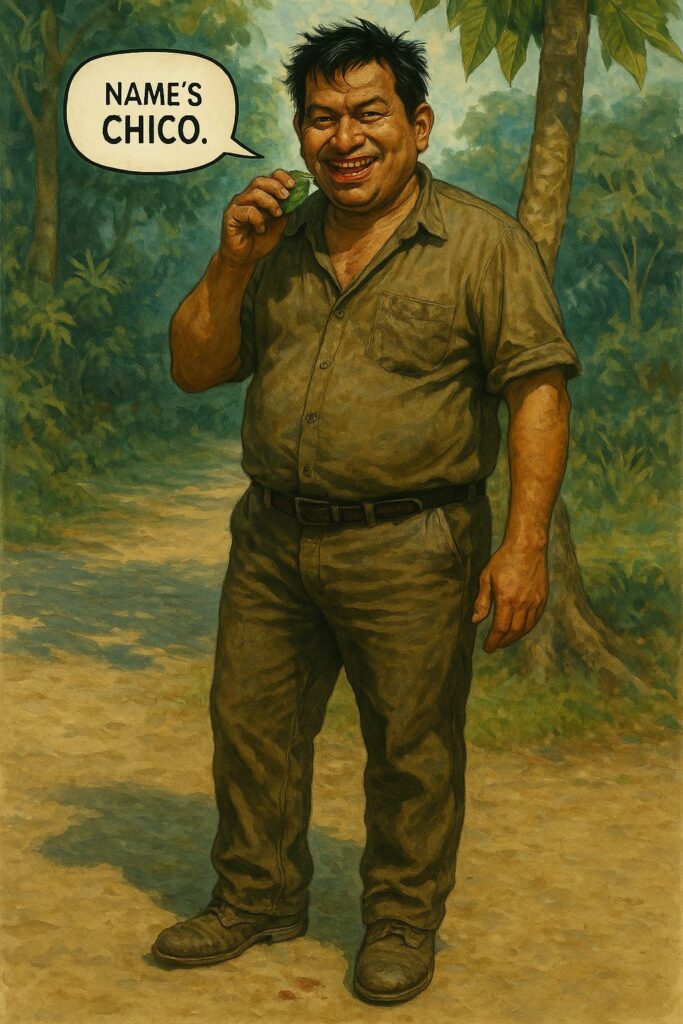
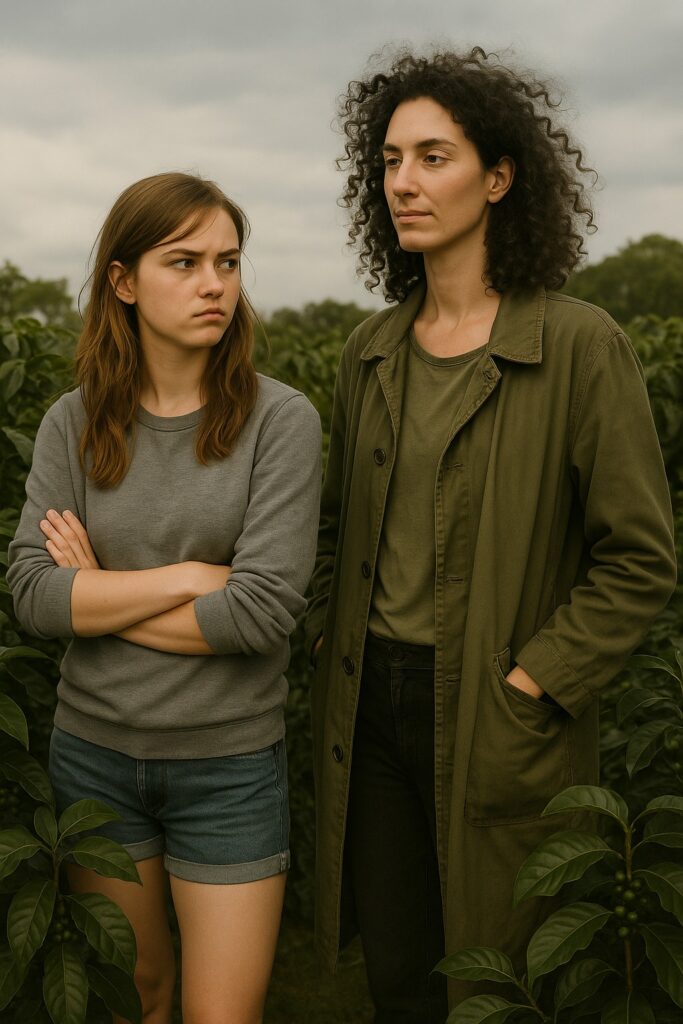
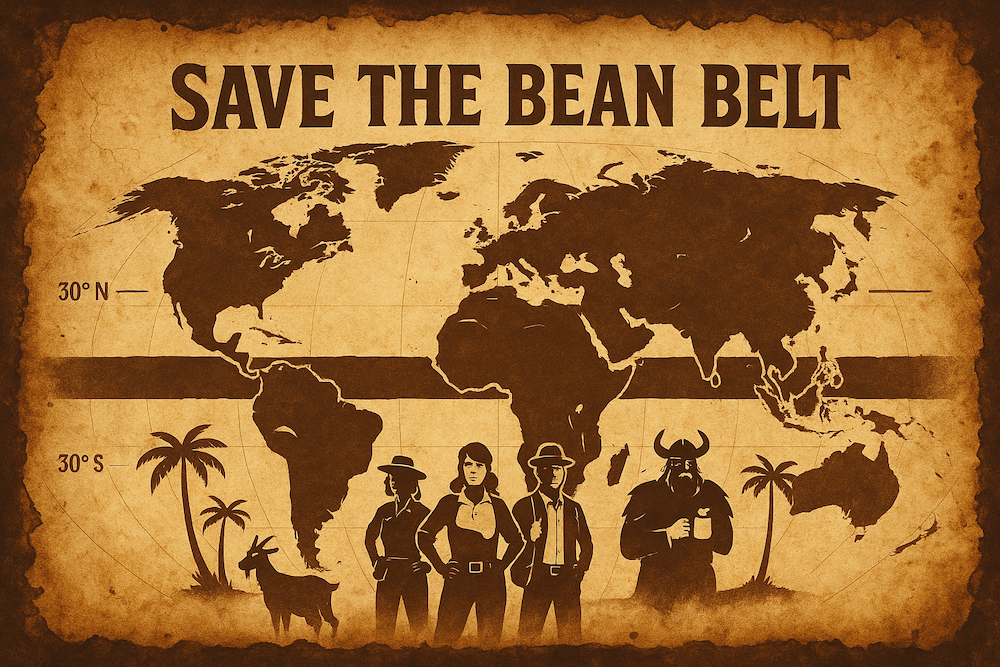
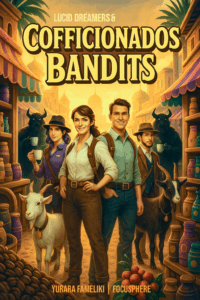
 6 months later…
6 months later…